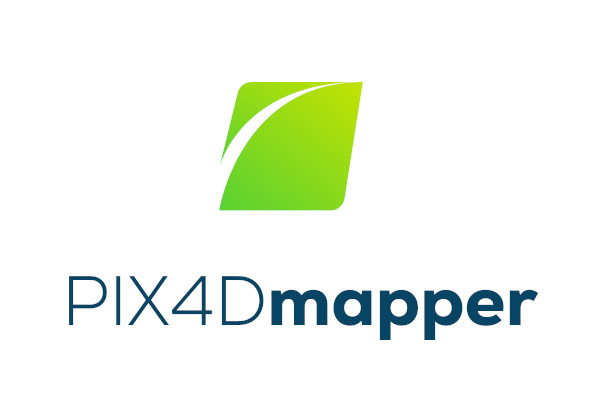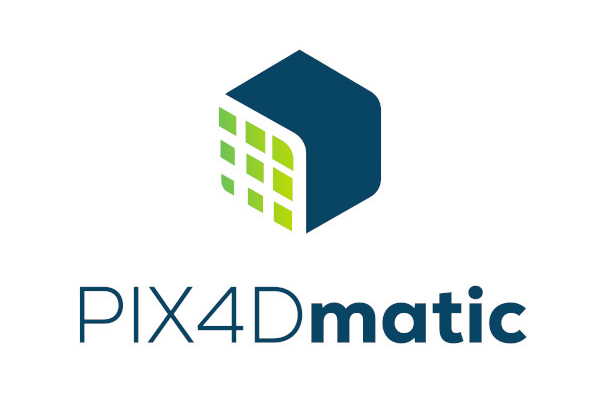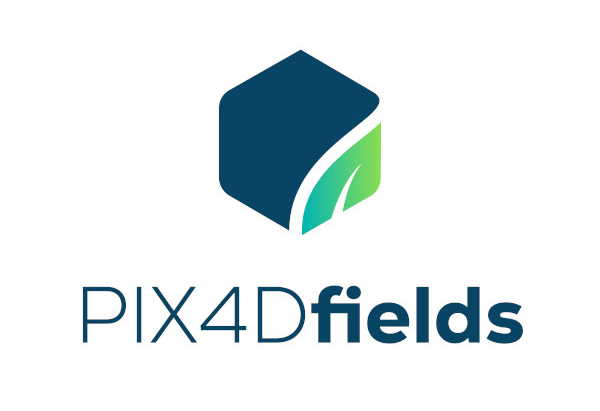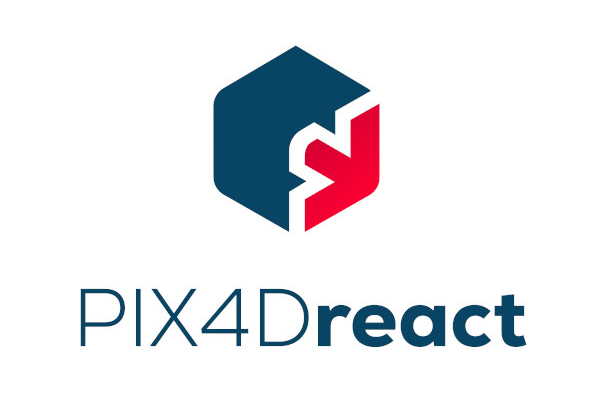Pix4D is a comprehensive and powerful software suite that specializes in photogrammetry, a technique used to create detailed 3D models and maps using images captured by drones. It has gained popularity across various industries, including surveying, construction, agriculture, and real estate, thanks to its ability to provide accurate and reliable results for a wide range of applications such as mapping, inspection, and asset management.
Photogrammetry, at its core, involves analyzing a collection of images taken from different angles and positions. Pix4D utilizes advanced algorithms to extract features and match corresponding points between these images. By doing so, it constructs a dense point cloud, which is a digital representation of a surface created by a large number of 3D points. These points are then used to generate a 3D mesh or model, providing a detailed representation of the captured area. Furthermore, Pix4D offers additional processing capabilities to create orthomosaic maps, digital surface models (DSMs), digital terrain models (DTMs), and more.
To utilize Pix4D in conjunction with a drone such as DJI, Yuneec, or Parrot, it is necessary to follow a series of steps that ensure successful data capture and processing:
Image Capture Planning: The initial step involves planning the drone flight mission using Pix4D's flight planning software or compatible applications such as DJI GO, DJI Pilot, or Pix4Dcapture. In this stage, you define the specific area you want to capture, set the desired image overlap (typically between 70% and 80%), and specify the flight altitude based on the desired level of detail and accuracy.
Drone Setup: Once the flight mission is planned, it is crucial to ensure that your drone is in optimal working condition. This entails fully charging the batteries and updating the drone's firmware to the latest version. If using an interchangeable lens camera system, it is important to attach a compatible high-resolution camera to the drone.
Image Capture: Following the planned mission, it is time to execute the drone flight. By adhering to the predefined flight plan, the drone's camera will capture a series of overlapping images as it navigates across the designated area. Consistency in maintaining the flight altitude and image overlap is essential for achieving accurate and reliable results.
Image Transfer: Upon completing the drone flight, it is necessary to transfer the captured images from the drone's memory card to a computer for further processing. Ensuring that all images are intact and arranged in the correct order is vital to maintain the accuracy of subsequent steps.
Pix4D Processing: The next stage involves launching the Pix4D software on your computer and creating a new project. Within the software interface, you import the captured images into the project and define the image geolocation and coordinate system, if required. Additionally, you have the opportunity to adjust various processing settings, such as image quality, keypoint density, and output formats, based on your specific project requirements.
Image Processing: With the project set up, you initiate the image processing workflow in Pix4D. The software intelligently analyzes the imported images, detecting and matching corresponding points between them. By doing so, it generates a dense point cloud that represents the captured surfaces and structures. The time required for this processing step depends on factors such as the number of images and the chosen processing settings.
Quality Control and Editing: After the image processing step, it is crucial to review the generated point cloud and 3D model within Pix4D's interface. This stage allows you to assess the quality and accuracy of the results. Pix4D also provides powerful editing tools to refine the model by removing artifacts, eliminating outliers, or enhancing the overall accuracy. If you have surveyed reference points known as ground control points (GCPs), this is the stage where you can incorporate them to achieve even higher accuracy in the final outputs.
Outputs and Analysis: Once you are satisfied with the results, Pix4D offers a range of outputs that can be generated based on your specific needs. These outputs include orthomosaics, which are high-resolution aerial maps with uniform scale and accurate representation of the terrain. Pix4D can also generate digital surface models (DSMs), which provide detailed information about the surface and its features, and digital terrain models (DTMs), which represent the bare ground without any objects or structures. Additionally, Pix4D can produce 3D textured models, allowing you to explore and analyze the captured area from different perspectives. These outputs can be exported in various formats, such as GeoTIFF, LAS, OBJ, or KMZ, enabling further analysis, measurement, or sharing with clients and stakeholders.
It is important to note that the specific process and features of Pix4D may vary depending on the version of the software being used and the drone model and camera employed. To ensure accurate guidance and instructions tailored to your specific setup, it is recommended to consult the official Pix4D documentation and resources, which provide comprehensive and detailed information on utilizing Pix4D with different drone models.
Pix4Dmapper is a specialized photogrammetry software solution offered by Pix4D, which is designed to create highly accurate 3D models, maps, and georeferenced orthomosaics from aerial images. Pix4Dmapper stands out as a robust and comprehensive tool for professionals in various industries, including surveying, construction, agriculture, and real estate.
With Pix4Dmapper, users can leverage the power of photogrammetry to analyze a collection of overlapping images captured by drones from different angles and positions. The software utilizes sophisticated algorithms and computer vision techniques to automatically extract features and match corresponding points between these images. By doing so, it reconstructs a dense point cloud, representing the captured surfaces and structures with a high level of detail.
The process in Pix4Dmapper begins by importing the captured images and defining their geolocation and coordinate system, ensuring accurate spatial alignment. The software then employs a series of processing steps, including feature extraction, image matching, and bundle adjustment, to generate a highly precise and dense point cloud. This point cloud serves as the foundation for generating various outputs, such as textured 3D models, orthomosaics, DSMs, and DTMs.
Pix4Dmapper excels in its ability to produce georeferenced orthomosaic maps, which are high-resolution aerial images stitched together and corrected for distortions, perspective, and terrain variations. These orthomosaics can be created with precise scale and spatial accuracy, making them invaluable for applications like land surveying, crop monitoring, and infrastructure inspection.
Furthermore, Pix4Dmapper offers advanced editing and quality control tools to refine the generated models and ensure their accuracy. Users can easily remove artifacts, outliers, or other unwanted elements, enhancing the overall quality of the outputs. Additionally, Pix4Dmapper supports the integration of ground control points (GCPs) to enhance the accuracy of the final products. By incorporating known reference points surveyed on the ground, users can achieve exceptional precision and align their models with the real-world coordinates.
One notable aspect of Pix4Dmapper is its versatility and compatibility with a wide range of drones, including popular models such as DJI, Yuneec, and Parrot. This compatibility allows users to leverage the capabilities of their preferred drones, capturing images with high-resolution cameras and integrating seamlessly with Pix4Dmapper for processing.
In summary, Pix4Dmapper is a comprehensive and powerful software solution that empowers professionals to transform aerial imagery into accurate 3D models, maps, and orthomosaics. Its advanced algorithms, editing tools, and drone compatibility make it a leading choice for precise mapping, 3D modeling, and geospatial analysis in various industries.
Pix4Dmatic is an advanced photogrammetry software solution developed by Pix4D specifically designed to streamline and expedite the processing of large datasets captured by drones, manned aircraft, or other aerial mapping systems. With its efficient processing capabilities and robust algorithms, Pix4Dmatic offers a solution for professionals who deal with massive amounts of aerial imagery, enabling them to generate accurate 3D models, point clouds, and orthomosaics in an optimized and time-effective manner.
One of the standout features of Pix4Dmatic is its ability to handle massive datasets. It can process millions of images, making it ideal for projects that involve extensive coverage, such as large-scale infrastructure mapping, corridor mapping, or aerial surveys spanning vast areas. This scalability allows users to efficiently process and analyze large volumes of aerial imagery, significantly reducing the time required for data processing and enabling faster decision-making.
Pix4Dmatic employs cutting-edge algorithms to automatically process and align images captured from various angles and perspectives. It uses feature extraction, image matching, and bundle adjustment techniques to accurately reconstruct the captured scenes in 3D. By matching corresponding points across images and incorporating accurate camera positions and orientations, Pix4Dmatic generates highly precise and dense point clouds, which represent the detailed geometry and structure of the captured objects and terrain.
The software's efficient processing pipeline optimizes computational resources to deliver rapid results. Pix4Dmatic utilizes parallel processing and distributed computing, taking advantage of multicore CPUs and multiple machines on a network to accelerate the processing time. This parallelization allows for simultaneous computation of multiple image blocks, enabling efficient utilization of available resources and expediting the generation of 3D models and orthomosaics.
Pix4Dmatic also offers a user-friendly interface that simplifies the processing workflow. Users can easily import large datasets and define the processing parameters and settings based on their specific requirements. The software provides flexibility in adjusting the level of detail, point density, and output formats to meet the project's needs. Additionally, Pix4Dmatic includes powerful editing tools that allow users to refine and enhance the generated results, removing outliers, adjusting boundaries, and improving the accuracy and quality of the final outputs.
Moreover, Pix4Dmatic supports the integration of ground control points (GCPs) to enhance the accuracy of the generated models. By incorporating known reference points with surveyed ground coordinates, users can achieve precise georeferencing and alignment of the models with real-world coordinates, making them suitable for applications that require accurate spatial information.
Pix4Dmatic maintains compatibility with a wide range of aerial mapping systems and sensors, offering users the flexibility to choose their preferred equipment for data capture. Whether using drones, manned aircraft, or other aerial platforms, Pix4Dmatic can effectively process the captured imagery and generate accurate 3D models and orthomosaics.
In summary, Pix4Dmatic is an advanced and efficient photogrammetry software solution designed for handling large datasets and processing extensive aerial imagery. Its scalability, rapid processing capabilities, and accurate results make it an indispensable tool for professionals engaged in large-scale mapping projects, infrastructure assessments, and aerial surveys. With its user-friendly interface and compatibility with various aerial mapping systems, Pix4Dmatic empowers users to efficiently generate high-quality 3D models, point clouds, and orthomosaics, enabling them to extract valuable insights and make informed decisions.
Pix4D Fields is a specialized software solution developed by Pix4D that caters specifically to the needs of professionals in the agricultural industry. It is designed to assist farmers, agronomists, and crop consultants in optimizing their agricultural practices by providing accurate and actionable information through advanced data analysis and mapping.
At its core, Pix4D Fields leverages the power of aerial imagery and data analytics to offer valuable insights into crop health, growth patterns, and variability within fields. By utilizing the principles of photogrammetry and remote sensing, the software enables users to capture high-resolution aerial images using drones or other aerial platforms and transform them into detailed maps and reports.
One of the key features of Pix4D Fields is its ability to generate precise and georeferenced orthomosaic maps of agricultural fields. These maps provide a bird's-eye view of the entire field, stitched together from multiple aerial images and corrected for distortions, perspective, and variations in terrain. The orthomosaic maps offer an accurate representation of the crop cover, allowing users to assess the health and vigor of the plants, identify areas of stress or nutrient deficiencies, and make informed decisions regarding irrigation, fertilization, or pest management.
Pix4D Fields goes beyond basic orthomosaic mapping by offering advanced analytics and indices specifically designed for agriculture. These include vegetation indices such as NDVI (Normalized Difference Vegetation Index), GNDVI (Green Normalized Difference Vegetation Index), and NDRE (Normalized Difference Red Edge Index), which provide valuable information about plant health, chlorophyll content, and biomass. By analyzing these indices across the field, users can identify areas with varying crop vigor, stress, or potential yield variations. This information serves as a basis for implementing targeted interventions and optimizing crop management strategies.
In addition to the orthomosaic maps and vegetation indices, Pix4D Fields offers a range of other analysis tools and features. It enables users to delineate field boundaries, calculate plant height, measure distances and areas, and generate prescription maps for variable rate application of inputs such as fertilizers or pesticides. The software also provides tools for comparing different layers of data, conducting temporal analysis to monitor crop growth over time, and generating reports that summarize key findings and recommendations.
Pix4D Fields provides a user-friendly interface that simplifies the workflow for agricultural professionals. It allows easy import of aerial imagery, intuitive visualization of maps and indices, and straightforward analysis and reporting functionalities. The software offers flexibility in adjusting settings and parameters to cater to specific crops, field conditions, and user requirements.
It is important to note that Pix4D Fields is compatible with various types of drones and sensors, providing users with the flexibility to choose the most suitable equipment for their agricultural applications. The software supports integration with popular drone models such as DJI, Yuneec, and Parrot, enabling seamless data capture and processing.
In summary, Pix4D Fields is a comprehensive software solution tailored for agricultural professionals, offering advanced data analysis and mapping capabilities. By utilizing aerial imagery and specialized analytics, the software enables users to assess crop health, identify variability within fields, and optimize agricultural practices. With its user-friendly interface, compatibility with different drones, and a range of analysis tools, Pix4D Fields empowers users to make informed decisions, improve crop management, and maximize yields in a precise and efficient manner.
Pix4D React is an innovative software solution developed by Pix4D that is specifically designed for rapid and real-time 2D mapping and monitoring purposes. With its powerful capabilities, Pix4D React empowers first responders, emergency teams, and professionals in critical situations to quickly assess, map, and analyze incidents or areas of interest using live aerial imagery and on-the-fly processing.
Pix4D React is built to provide immediate situational awareness by leveraging the power of drones equipped with live video streaming capabilities. It allows users to deploy drones to capture live aerial footage of an incident or area, such as a disaster site, accident scene, or search and rescue operation. The software then processes this live video feed in real-time, extracting key information and generating accurate 2D maps and models on the fly.
One of the primary features of Pix4D React is its ability to rapidly generate orthomosaic maps from the live video feed. These orthomosaics provide a high-resolution, georeferenced overview of the area being monitored, offering real-time insights into the terrain, structures, and objects of interest. This enables responders to quickly assess the situation, identify potential hazards, and plan their actions accordingly.
Pix4D React goes beyond simple mapping by offering advanced analysis capabilities. It allows users to measure distances, areas, and perimeters directly on the live video feed or the generated orthomosaic maps. This feature aids in making accurate and informed decisions on the ground. Additionally, the software provides annotation tools, allowing users to mark points of interest, draw paths, or add textual information to enhance communication and collaboration among team members.
Another notable feature of Pix4D React is its integration with artificial intelligence (AI) and machine learning algorithms. These advanced algorithms enable the software to automatically detect and identify objects or features in the live video feed or orthomosaic maps. This includes the detection of vehicles, buildings, people, or specific objects relevant to the incident. Such real-time object detection capabilities enhance the efficiency and effectiveness of the response efforts by providing actionable intelligence to the users.
Pix4D React offers a user-friendly interface designed for quick and intuitive operation in high-pressure situations. It provides seamless integration with compatible drones, including popular models like DJI, Yuneec, and Parrot, enabling efficient data capture and real-time processing. The software also supports the streaming of live video feed to multiple devices, allowing team members or decision-makers to remotely access and collaborate on the same visual information.
Furthermore, Pix4D React emphasizes data security and privacy. It ensures that sensitive information captured during emergency operations is protected and complies with industry standards and regulations.
In summary, Pix4D React is an advanced and powerful software solution that enables real-time 2D mapping, monitoring, and analysis using live aerial imagery. Its rapid processing capabilities, advanced analysis tools, and integration with AI algorithms provide first responders and emergency teams with valuable situational awareness and actionable intelligence. With its user-friendly interface and compatibility with popular drone models, Pix4D React facilitates efficient decision-making and enhances the effectiveness of response efforts in critical situations.
Pix4D Inspect is a comprehensive software solution developed by Pix4D specifically tailored for professionals in the inspection and asset management industry. It provides a powerful platform for capturing, analyzing, and visualizing high-resolution aerial imagery and data to facilitate efficient inspection workflows and asset monitoring.
Pix4D Inspect enables users to leverage the capabilities of drones to capture detailed imagery of assets such as buildings, infrastructure, power lines, and pipelines. By employing drones equipped with high-resolution cameras, inspectors can capture aerial images from various angles and perspectives, covering extensive areas and hard-to-reach locations. These images serve as the foundation for the inspection and analysis process in Pix4D Inspect.
One of the primary features of Pix4D Inspect is its advanced photogrammetry capabilities. The software utilizes specialized algorithms and computer vision techniques to process the captured images and generate accurate 3D models and point clouds of the inspected assets. These 3D models provide a detailed representation of the structures, allowing inspectors to virtually navigate and examine them from different angles and viewpoints.
Pix4D Inspect goes beyond basic 3D modeling by offering advanced inspection and analysis tools. It allows users to annotate and mark specific areas or points of interest directly on the 3D models or images. This feature facilitates the identification and documentation of defects, damages, or anomalies, enabling efficient asset management and maintenance planning.
Moreover, Pix4D Inspect supports the integration of thermal imagery for thermal inspections. By utilizing drones equipped with thermal cameras or by importing thermal images captured separately, users can analyze temperature variations and identify potential issues related to heat dissipation, insulation, or electrical systems. This capability is particularly valuable for industries such as energy, utilities, and building inspection.
Pix4D Inspect also offers comprehensive measurement and annotation tools, allowing users to take accurate measurements of distances, areas, and volumes directly on the images or 3D models. This feature enables inspectors to quantify the extent of damages or defects, assess the dimensions of assets, and generate detailed reports for documentation and decision-making.
Additionally, Pix4D Inspect supports the integration of external sensors and data sources to enhance the inspection process. It allows users to import data from various sources, such as LiDAR scanners or GPS devices, to supplement the captured imagery and generate more comprehensive and accurate models. This integration of multiple data sources provides a holistic view of the assets, enhancing the effectiveness and reliability of inspections.
Pix4D Inspect offers a user-friendly interface that simplifies the inspection workflow. It allows for easy import of captured imagery, intuitive visualization of 3D models and images, and straightforward access to analysis and measurement tools. The software provides flexibility in adjusting settings and parameters to cater to specific inspection requirements and user preferences.
It is worth noting that Pix4D Inspect supports compatibility with a range of drones, including popular models like DJI, Yuneec, and Parrot. This compatibility allows users to leverage their preferred drones, capturing high-resolution imagery with precision cameras and seamlessly integrating with Pix4D Inspect for processing and analysis.
In summary, Pix4D Inspect is a comprehensive software solution that enables efficient inspection and asset management workflows. By leveraging aerial imagery, advanced photogrammetry, and analysis tools, it empowers professionals to conduct detailed inspections, document defects, and make informed decisions regarding maintenance and asset management. With its user-friendly interface, compatibility with popular drone models, and integration of external sensors, Pix4D Inspect enhances the efficiency, accuracy, and reliability of inspections in various industries.




